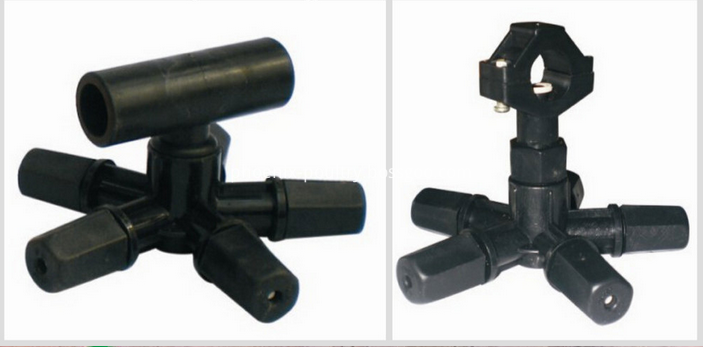Soybean meal is rich in protein, various amino acids, lactic acid, phosphorus, magnesium, calcium and many kinds of vitamins. It has a beautiful color and aroma. It has a certain health care function. Processing foods are available in the north and south of China. However, if you do not pay attention to the adding process, it will result in deterioration of quality, or even mildew, resulting in economic losses. 1. Process black beans → screening → washing → soaking → drain (TY-II) → steaming → cooling → inoculation → koji → washing → dipping FeSO4 → salt mixing → fermentation → drying → finished product (dried soybean meal) II. Operation points (1) Raw material processing Raw material screening: Choose black soybeans with adequate ripeness, full and uniform particles, thin fleshy, no worms, no mildew, and a certain degree of freshness. 2. Washing: Use a small amount of water several times to wash away sand mixed with impurities in the soybeans. 3. Soaking: The purpose of soaking is to make black beans absorb certain moisture so as to quickly reach moderate denaturation when steamed; to make gelatinization easy, to dissolve the nutrients required by mold; to provide the moisture necessary for mold growth. Soaking time should not be too short. When the soybean absorption rate is 95%, the soybean absorbs too much water and bursts and loses its integrity. When the koji is produced, “burning†occurs. After the fermented soybean meal made of bitter, and easy to rotten deterioration. Therefore, we should choose the soaking condition in production and processing at 40°C for 150 minutes so that the soybean grain absorption rate is 82%. At this time, the soybean volume expansion rate is 130%. 4. Cooking: The purpose of cooking is to destroy the internal molecular structure of soybeans, to moderately denature proteins, to be easily hydrolyzed, to achieve gelatinization, and to serve as a sterilizer. The cooking conditions were determined to be 1 kgf/cm2, 15 minutes or atmospheric pressure for 150 minutes. (b) The purpose of koji-making koji is to make the cooked beans produce the corresponding enzyme system under the action of mould. In the brewing process produces a wealth of metabolites, so that the pods have a delicious taste and unique flavor. The cooked soybeans were panned, cooled to about 35°C, and inoculated with broth 3042 or TY-II. The inoculation amount was 0.5%. Mix well into the room and maintain the temperature at 28°C. Observe every 6 hours after 16 hours. The koji is first turned around in 22 hours. The turning is mainly to loosen the koji, increase the gap, reduce the resistance, adjust the temperature of the product, and prevent the temperature from rising to cause burns or contamination of the bacteria. 28 hours for a second turn. Turning music can improve the quality of making koji at a proper time. If the turning is too early, the sprouted spores will be inhibited. If the turning is too late, bacterial contamination or burning will occur due to the rising temperature of the material. When the rhythm is covered with mycelium and yellow spores, it can be played. The average koji time is 34 hours. (3) Fermentation of fermented soybean meal is the use of proteases produced during the koji process to decompose the protein in the beans to form a certain amount of substances such as amino acids and carbohydrates, which imparts inherent flavor to the soybean meal. 1. Washing: A lot of spores and hyphae are attached to the surface of pods, which are rich in proteins and enzymes. If the spores and hyphae are not washed out, they will remain on the surface of the koji and will be partially hydrolyzed and hydrolyzed after fermentation. However, most of them are still attached to the surface of bean curd in the form of spores and hyphae, especially the spores have a bitter and astringent taste, which will give bitter taste to the bean pods and cause dullness of the color. 2. Add green barley to make the beans black, while increasing light. 3. Dipping: Adding 18% of salt, 0.02% of barley, and appropriate amount of water to Chengqu, it is appropriate to have a curved surface and dip for 12 hours. 4. Fermentation: The treated bean curd is filled into a jar until it reaches 80% or 90% full, and when packed, the layers are compacted and placed in a thermostatic chamber at 28°C-32°C for heat preservation and fermentation. Fermentation time is controlled in about 15 days. (d) After the dried soybean meal has been fermented, it shall be taken out from the tank and dried in the air at a certain temperature to be the finished product. Third, quality standards (a) sensory indicators 1. Color: dark brown, shiny oil. 2. Aroma: Maotai, ester-like, no bad smell. 3. Taste: delicious, salty and delicious, no bitter taste. 4. Body: The particles are complete, loose, and hard texture. (B) Physical and chemical indicators 1. Moisture: no less than 18.54%; 2. Protein: 2761g/100g; 3. Amino acid: 1.6g/100g; 4. Total acid (as lactic acid) 3.11g/100g; 5. Salt (in sodium chloride) 14g/100g; 6. Non-salt solids: 29g/100g; 7. Reducing sugar (as glucose): 2.09 g/100 g.
PP plastic, solid appearance, can anti-aging, a total of four outlet, the range of each outlet according to water pressure, under normal circumstances of each outlet range from 1.2 to 1.8 m;Connection of the pipe can be iron pipe, also can be a PVC pipe, water pipe's outer diameter 20 mm, and 25 mm;Can be applied to chicken, duck, pig sty, etc., used to cool!Can also be applied to water crops;Corral, greenhouses, textile workshop all can use.Used with plastic straight, make products to be solid and reliable.

Spray Disinfection Cooler,High Pressure Spray Nozzle,Poultry House Cooler Nozzle,Cooling Disinfection System
Cangzhou Phoenix Breeding Equipment Co.,LTD , http://www.phoenix-poultry.com